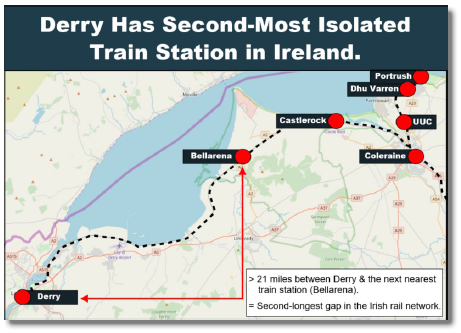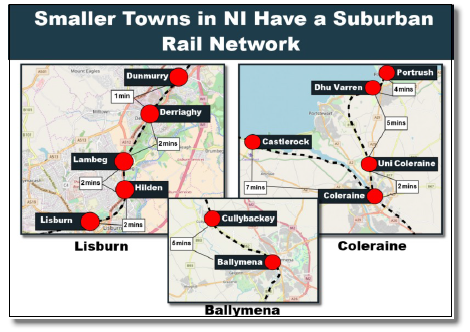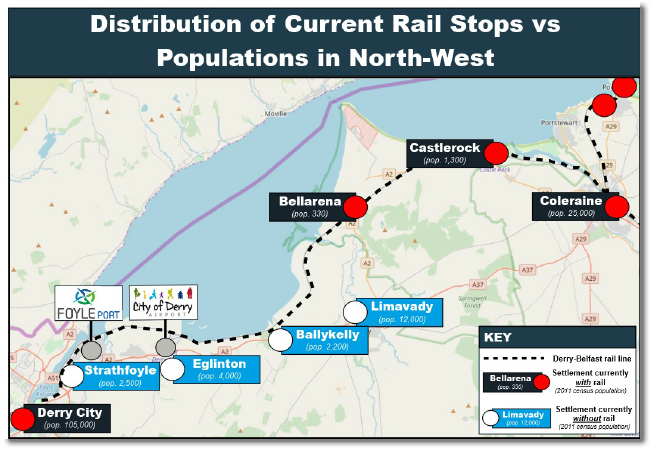Despite being the fourth largest city on the island, Derry is the second-most isolated location on the island’s rail network (the next-nearest station is 21 miles away) and the most isolated on the Northern Ireland Railways network. Last century before the rail cuts, the city had 4 terminal stations in the city centre.

This is in stark contrast to smaller towns on the same line and elsewhere in Northern Ireland, which have a nearby cluster of rail stops that function as a commuter network for them, for example the 5 stations in and around Coleraine (population 25,000).

The lack of any rail stops within Derry’s hinterland prevents the existing rail corridor from being a viable option for travel to/from those suburbs and settlements the line passes through (e.g. Ballykelly, Eglinton, Strathfoyle).
This contributes to the significant volume of vehicles that commute to and from the city daily eastwards along the A2 road. This road was dualled between Foyle Bridge and Derry Airport in 2011, and peak hour traffic volumes on the rest of the route are creating pressure for further widening (to Limavady).
The location of rail halts in the North-West is therefore sub-optimal because :
- It has isolated Derry on the network
- Prevents rail from fulfilling a commuter role for Derry.
- Minimises modal shift and promotes car usage.
- Minimises rail passengers & revenues on the Derry-Coleraine track.
There is therefore both a need and an opportunity for additional stations/halts to be installed to the east of Derry on the existing line.
Poor Location of Existing Rail Stops In North-West
Of the 14 stops on the Derry-Belfast line, only 3 are located west of Coleraine/the River Bann. Of those, the majority serve settlements with small populations.
Meanwhile the rail line between Derry and Coleraine passes alongside or close to some much larger and fast-growing towns and villages – as well as both an Airport and a Seaport. Yet the absence of stops nearby prevents rail from being a viable option for travel to any of those places.
The location of current stops on the line between Derry and Coleraine is therefore clearly sub-optimal, and prevents rail from maximising its potential for the entire North-West region.

